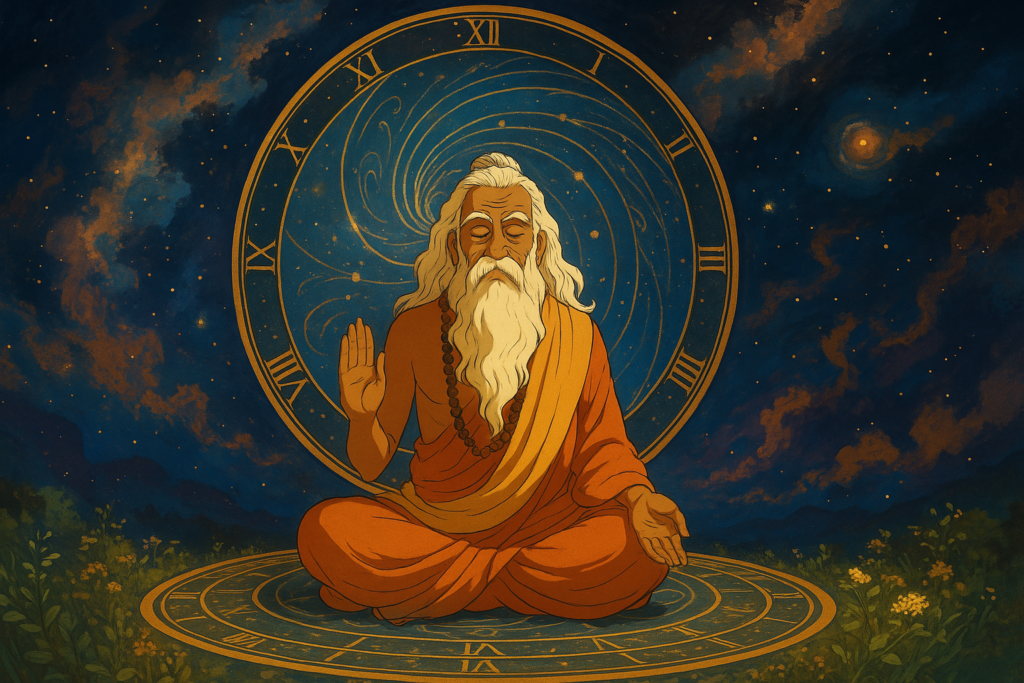Introduction: A Journey Beyond Time
Vedic Time Travel isn’t just a mystical idea—it’s a profound concept rooted in the sacred texts of Hinduism that hints at a forgotten science of time manipulation. Imagine a world where sages traverse ages, kings return to find centuries passed, and time flows differently across divine realms. This isn’t fiction—it’s recorded scripture.
From the Bhagavata Purana’s tale of King Kakudmi and his daughter Revati to the timeless wanderings of Ashwatthama and the dimensional journeys of Sage Narada, Hindu mythology holds narratives that challenge linear time and resonate with today’s scientific understanding of relativity, time dilation, and higher dimensions.
In this deep exploration, we’ll uncover whether Vedic Time Travel was a poetic metaphor, or if ancient rishis truly grasped secrets of time, space, and the cosmos that science is only beginning to comprehend.
These compelling stories, found throughout ancient Indian texts, offer insights that align astonishingly with contemporary scientific theories such as Einstein’s relativity, quantum physics, and even multidimensional travel. In this comprehensive exploration, we investigate whether these ancient narratives reflect genuine scientific truths, hidden through symbolic mythology or stand as profound philosophical metaphors.
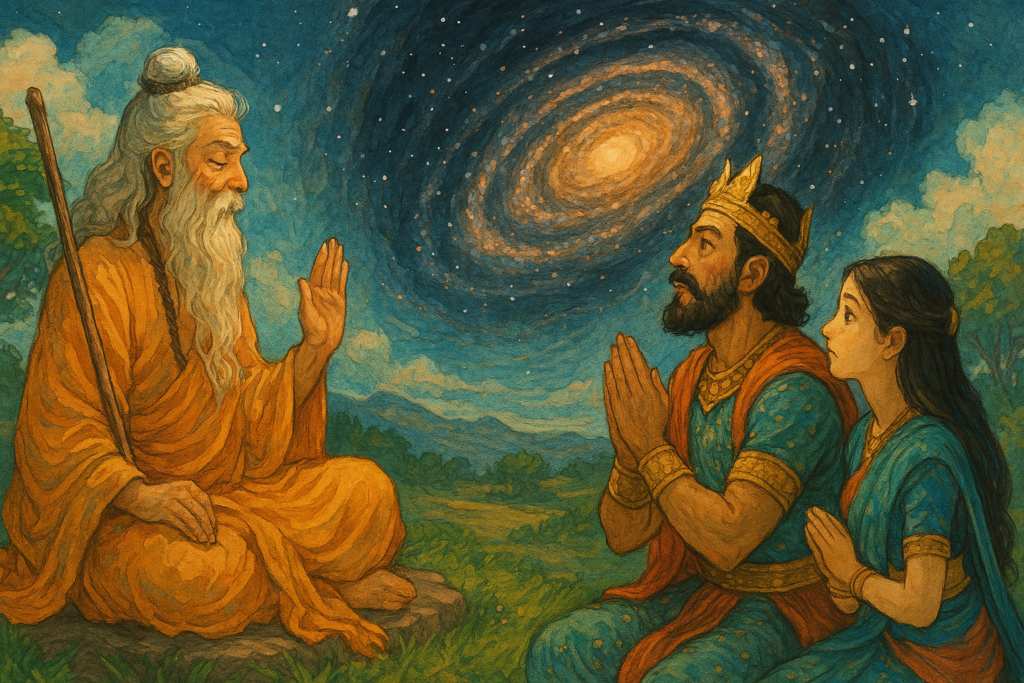
King Kakudmi and Revati: An Astonishing Tale of Time Dilation
The Celestial Encounter with Brahma
King Kakudmi, a wise and revered ruler, faced a dilemma—finding the perfect match for his daughter, Revati. His quest for divine counsel led him to Brahmaloka, the heavenly abode of Lord Brahma, the creator deity. On arrival, they found Brahma absorbed in celestial music and patiently waited their turn. However, when Brahma finally spoke, his revelation was staggering:
“The brief moments you’ve waited here equal thousands of years on Earth. Everything you knew has long since faded into history.”
(Bhagavata Purana 9.3.28-32)
This account astonishingly parallels modern physics’ concept of time dilation, highlighting the relativity of time across different realms.
Unpacking the Wisdom: Ancient Insights into Relativity?
Could the story of Kakudmi symbolize an advanced comprehension of time dilation—long before Einstein formulated his groundbreaking theories? Modern science confirms that time indeed flows at varying rates under different gravitational forces and velocities, lending credibility to the profound insights hidden in ancient Hindu mythology.
Time Dilation: Ancient Texts Meet Einstein’s Relativity
Einstein’s Relativity Simplified
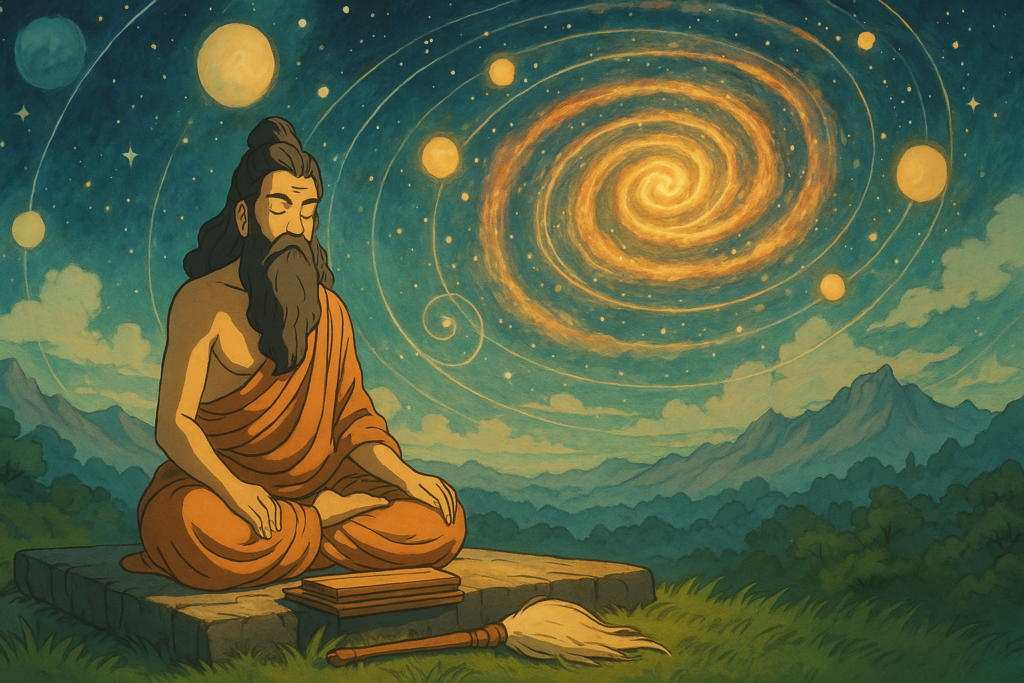
Einstein demonstrated that time isn’t absolute but rather relative, affected profoundly by speed and gravity. For example, astronauts traveling in space at high velocities age slightly slower compared to people on Earth, a proven phenomenon known as time dilation.
Ancient Wisdom: Echoes of Modern Physics in Hindu Scriptures
Remarkably, Vedic scriptures like the Mahabharata and the Upanishads describe similar scenarios. Brahmaloka and other celestial worlds are portrayed as realms where time flows distinctly slower or faster compared to Earth, indicating that ancient sages might have intuitively grasped concepts akin to relativity.
More Fascinating Accounts of Hindu Time Travel
King Muchukunda: The Cosmic Sleep
The legendary King Muchukunda, after assisting the gods in their celestial battles, was granted deep sleep as a boon. Upon awakening centuries later, he found the world dramatically altered, his kingdom long vanished. This intriguing tale resembles modern speculative concepts like suspended animation or interstellar travel, where travelers awaken after centuries due to time dilation effects
Sage Narada: Timeless Traveler Across Ages
Narada, an eternal sage, effortlessly moves through epochs and Yugas, experiencing events across vast timelines. His seemingly limitless freedom to traverse the cosmic timeline might symbolize advanced spiritual or dimensional awareness, closely resonating with modern quantum theories about multidimensional reality and the flexible nature of spacetime.
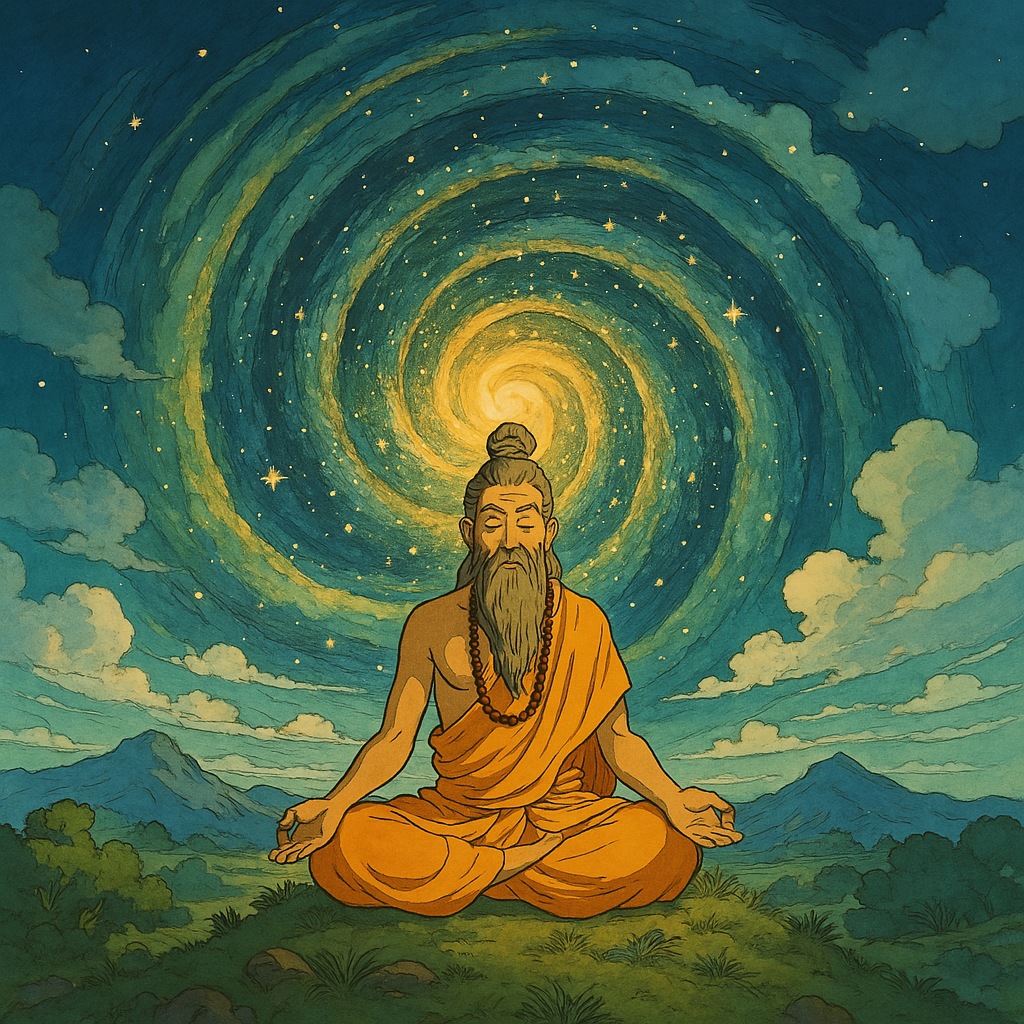
Pandavas’ Hidden Year: Agyatavasa
The Pandavas’ exile included a hidden year (Agyatavasa), where their experiences subtly suggest altered perceptions of time. This enigmatic period can be interpreted as an example of dimensional displacement or temporal anomaly, again intriguingly parallel to modern physics’ speculative discussions of time loops or alternate realities.
Ashwatthama: Eternal Wanderer Across Time
Ashwatthama, cursed with eternal wandering, embodies a paradoxical existence beyond normal temporal limitations. His ageless wandering resonates with contemporary scientific inquiries into biological immortality and the possibility of prolonged or timeless existence through temporal manipulation.
Science or Myth: Decoding the Ancient Narrative
Arguments for Ancient Scientific Knowledge
Proponents assert that Hindu mythologies contain metaphorically encoded advanced scientific knowledge. They argue that ancient rishis had genuine insights into quantum physics, multidimensional reality, and relativity, encoded as symbolic myths to preserve their wisdom across generations.
Counterarguments: Allegorical Wisdom?
Critics, however, propose these narratives are allegorical, created purely to impart spiritual teachings and ethical wisdom. Yet, the profound specificity and accuracy of these ancient stories strongly suggest an intentional encoding of sophisticated scientific truths, deserving further scientific and philosophical investigation.
Vedic Concept of Cyclical Time and Higher Dimensions
The Cosmic Wheel: Kalachakra
Hindu cosmology describes time as cyclical (Kalachakra), consisting of recurring cosmic cycles known as Kalpas and Yugas. Modern cosmological theories intriguingly echo this concept, suggesting our universe might similarly experience repeated cycles of creation, existence, and dissolution.
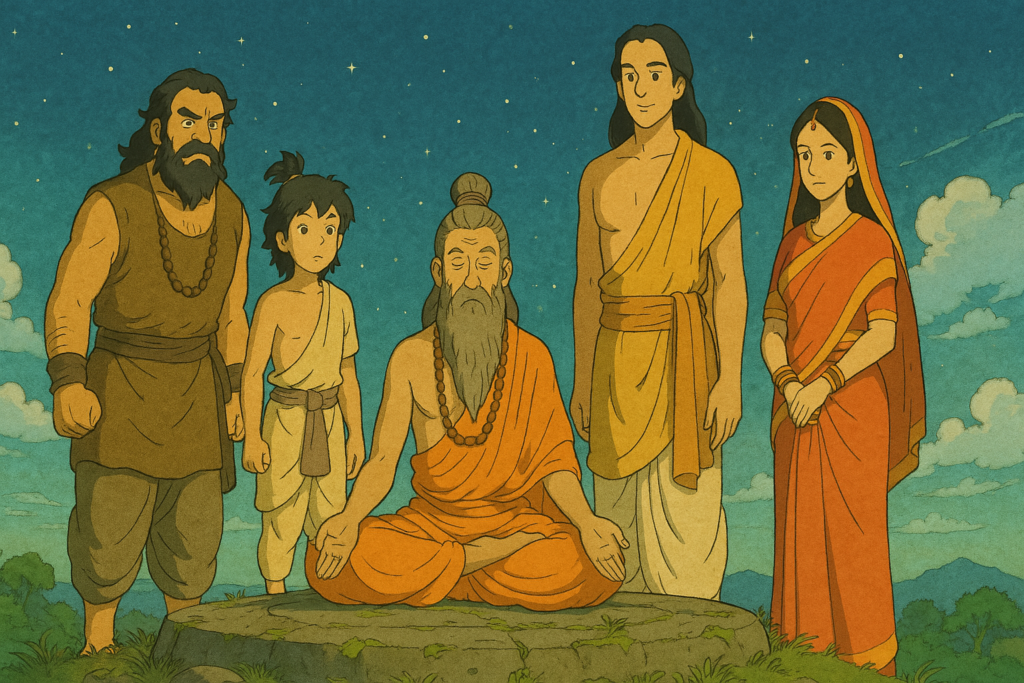
Dimensions Beyond the Physical
Texts such as the Puranas vividly illustrate higher-dimensional realms like Brahmaloka, where time passes distinctly from earthly standards. Modern physics, through theories like string theory and multiverse hypotheses, similarly propose the existence of dimensions beyond our familiar three-dimensional world, lending significant credibility to ancient Hindu cosmological concepts.
Bridging the Gap: Ancient Myths Meet Contemporary Science
Can these ancient narratives genuinely correspond with contemporary scientific theories such as wormholes, time dilation, and the Twin Paradox? Eminent figures like Carl Sagan acknowledged the striking parallels between Hindu cosmological insights and modern scientific theories, suggesting a potential bridge between ancient wisdom and modern understanding.
Credible Sources and Further Reading
- Bhagavata Purana (Canto 9)
- NASA’s exploration of time dilation
- Physics.org on Einstein’s relativity
- Scientific American on higher dimensions and string theory
- Academic papers via Google Scholar exploring Hindu cosmology and physics
Conclusion: Timeless Wisdom or Allegorical Myth?
Did ancient Hindu rishis possess genuine insights into the mysteries of time travel in Hinduism and dimensional reality, or are these sophisticated myths simply metaphorical narratives? The remarkable alignment between Hindu scriptures and modern scientific principles strongly supports the idea that ancient sages might have genuinely understood profound truths about the universe’s fundamental nature.
What do you believe? Share your thoughts and join this timeless exploration of ancient wisdom and modern science below!

